Within the vast mythical corpus concerning the ophidic symbolism there are some mythologems, recurring all over the world, conveying certain initiatory knowledge whose universality goes beyond the spatial and chronological boundaries, such as that of the double serpent (Caduceus of Mercury, Iga and Pingala), that of the serpent who, standing beneath the worlds or surrounding the earth in the form of Ouroboros, holds the entire cosmic manifestation, and that of the dragon in the function of "Guardian of the treasure" that the hero must subdue and defeat in order to save the "Princess ".
di Marco Maculotti
adapted from "The snake and the dragon: morphology of ophidic symbolism ", ne The Age of the Serpent, Valusia # 2, Italian Sword & Sorcery Books, Summer 2019
cover: Marian Wawrzeniecki, “A Fairy Tale about the Princess and the Dragon”, 1904-08
[...] other points of view can be deduced from this universal mythologem based on the dichotomy and the struggle between a luminous-uranic-masculine principle and a selenic-telluric-feminine principle, most often represented in ophidic form. The latter also represents the potential energy that can be used in so-called 'magical' operations: this symbolism is linked to the caduceus of Mercury and the kundalini tantric, feminine energy that in the form of a snake goes up the spinal column of the initiate, to lead him to liberation. The 'submission' of this sacred energy - or, better said, the ability to 'channel' it and 'handle it' at will - would constitute the ultimate goal of every initiatory journey: in other words, the neophyte must 'transform' into the Uranian god in order to tame the subterranean Dragon, that is to say the unconscious energies, existing in its own interiority in a chaotic and undifferentiated state, and therefore to freely dispose of them.
In the caduceus of Mercury the serpent is represented in double form, according to the maxim that poison and drug are two sides of the same coin; symbolism which, on closer inspection, is also found in the Indian tradition in the double aspect of ida e ping it which, crossing in a spiral, act as lateral pathways for the central channel, sushumna. In these two 'serpents', or lateral 'energy channels', we trace the same symbolism of the two serpents of the caduceus of Mercury, as well as the two Masonic columns Jachin and Boaz and those of the tree sephirothic of the kabbalistic tradition (the "pillar of mercy" and the "pillar of rigor", and between the two the central one, the "pillar of conscience"): all symbols of the so-called "Way of the Right Hand" and "Way of the Left Hand", among which, unlike what many overly simplistic opinions maintain, a 'choice' should not be made, with a consequent 'abandonment' of the 'discarded' way, but rather one is to be operated on Coniuctio oppositorum through which the initiate can integrate the 'draconian' dross into his supernal and 'luminous' being.
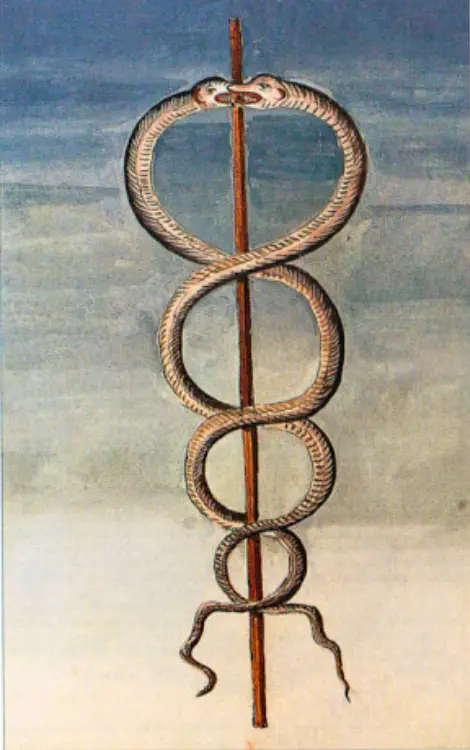
Nor will we fail to note, at a completely different level of analysis, how all these equivalent symbologies are individually connected with the structure of human DNA; on the other hand, in this regard, anyone who chews a bit of hermetic doctrines will not be surprised, knowing well the first principle of Tabula Smaragdina attributed to the mythical Hermes Trismegistus, in whose name, however, returns both the Hermes / Mercury, god-hierophant initiator to the sacred Mysteries, and the triple nature of sacred energy, as it is considered channeled, as we have seen, through three different conduits (or, better, through the two lateral ones which, balancing themselves, lead to the 'awakening' of the third, the central one).
This is why in the alchemical doctrines the energy underlying the whole complex of reality is represented in the form ofOuroboros, that is to say of the snake that bites the rope: this by representing the sacred energy that underlies all Creation, and that sustains it perennially, in a form of "primordial matter", chaotic, undifferentiated and germinal, from which it is believed the Magician can draw to carry out his occult operations.
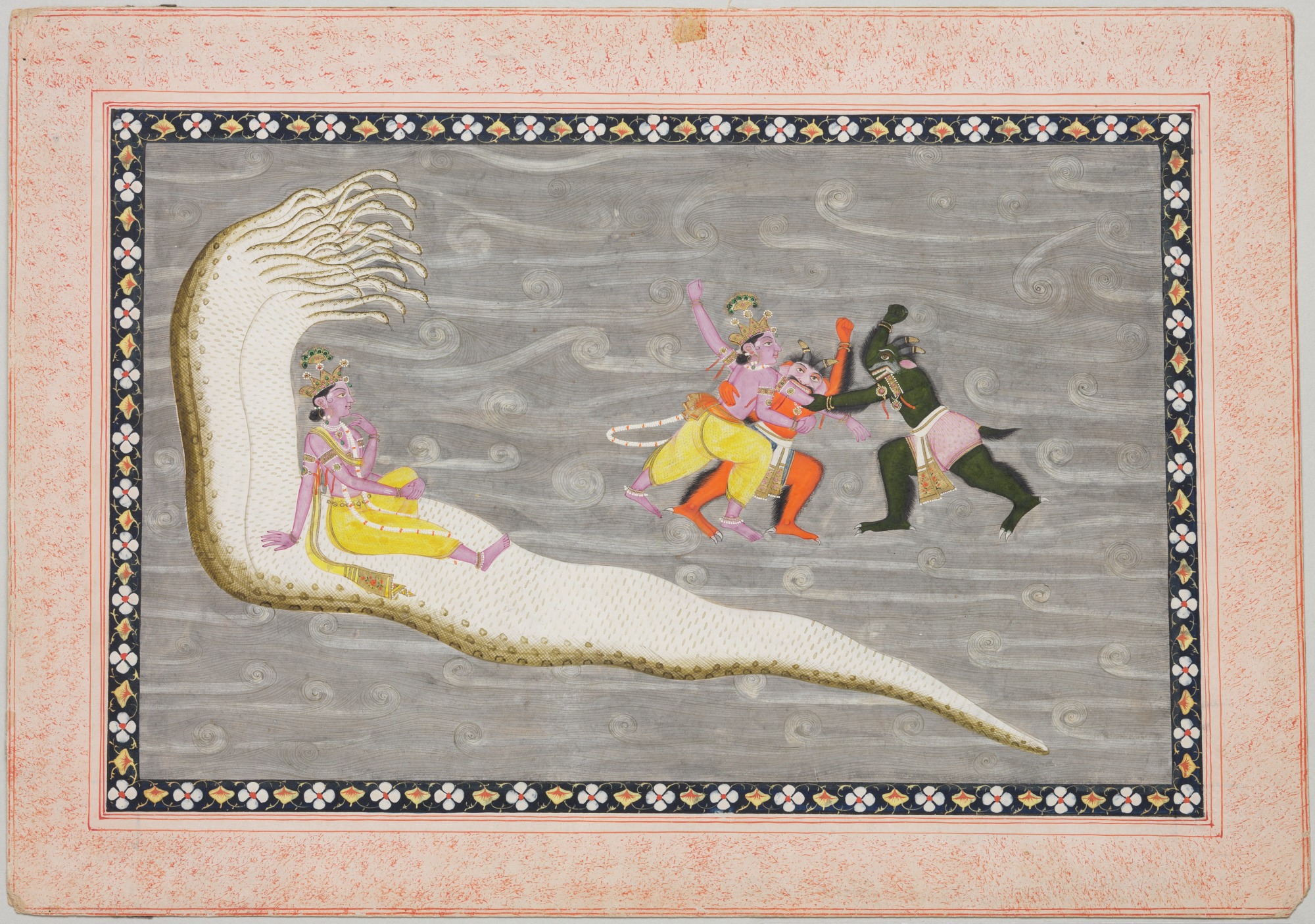
The Serpent beneath the worlds
Perhaps it is also for this reason that, in the most disparate ancient cosmologies, below the lowest level of reality it is believed there is a mythical creature in ophidic form, which on its coils holds the entire destiny of the cosmic cycle. In Indian myths a huge snake is found beneath all existing worlds, namely the seven worlds of the subterranean kingdom of Pātāla: this mythical reptile is named Shesha ("Residual, remaining"), and its mythical function is that of hold up the world (ie: the Work of Creation). It is believed that when he shakes one of his thousand heads the earth shakes and that at the end of each kalpas (i.e. every 4.320.000.000 years) Shesha writhes convulsively and destroys the world with fire [1]. Also, in the mythical cycle concerning the supreme god Vishnu (that is to say the supreme and absolute Being), it is represented lying on the coils of Ananta ("Infinite"), another gargantuan reptile representing the multiplicity and fluidity of cosmic manifestation. So writes the German orientalist about it Heinrich Zimmer [2]:
«The god lies in his sleep in a graceful, relaxed position, as if absorbed in the dream of the universe contained within him […] Viśnu's shoulders and head are surrounded and protected by nine heads of snakes with their hoods spread out; the god lies on the mighty coils. This many-headed snake is the animal equivalent of the anthropomorphic sleeper. He is called Infinite (ananta) and also Remaining, Residual (śesa). It is a figure that represents the remnant that remained after the earth, the upper and infernal regions, and all their beings, were molded and drawn from the cosmic waters of the abyss. »
The mythologeme it is found the same in the Norse tradition: here we are talking about Nidhoggr, huge dragon that lives below the nine worlds, at the roots of theYggdrasil, which chews continuously. When the roots of the Cosmic Tree are completely cut off, the will come Ragnarokkr, the end of the cosmos as we know it: then the final battle will occur between the gods of Asgard and the forces of chaos. But, similarly to the Hindu tradition, the Nordic one also recognizes a second cosmic serpent, namely Jormungandr, the Serpent of Mitgard, which encircles the world in the form of Ouroboros and prevents the cosmic ocean from rising and flooding our world; but, as mentioned, when Nídhöggr has chewed the roots ofYggdrasil, the final catastrophe of the cycle will arrive and the ocean will overflow over Mitgard, decreeing the death of all its inhabitants [3]. We therefore find in the Norse myth, as well as in the Indian one, the dichotomous presence of the two cosmic serpents, whose fragile balance makes the existence of the world of manifestation possible.
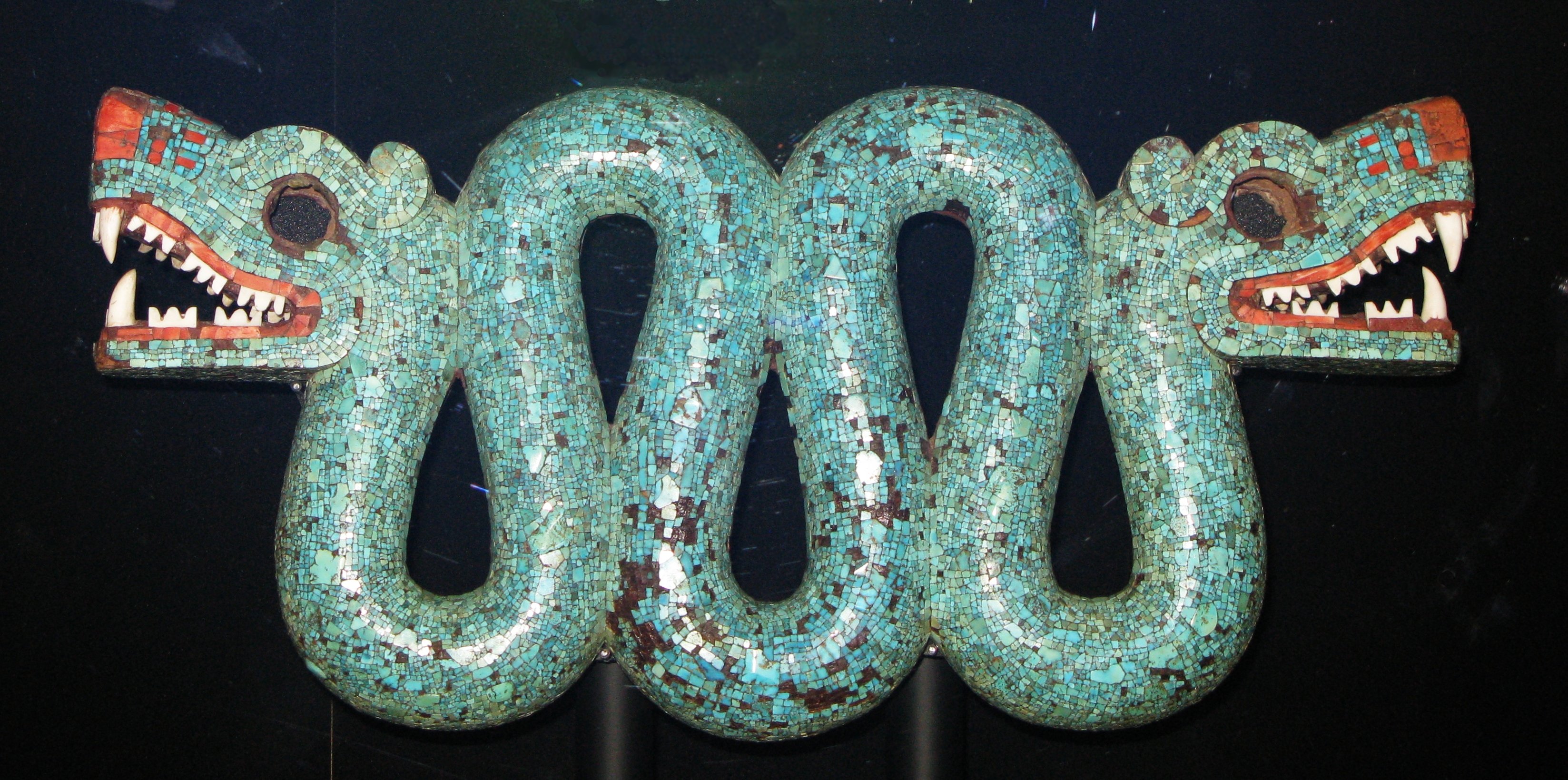
Identical is also a myth that reaches us from the other side of the world, and precisely from Perù, where it speaks of the immense snake Amaru [4], dwelling in the bowels of the earth: «Amaru sleeps, ma when it shakes it produces the earthquake that marks the end of a cycle, then the world returns to the primordial darkness and the giants invade it to establish the kingdom of the living dead and the living pass into the regions of the dead, until the new sun rises " [5], with 'Sun' traditionally meaning, in the pre-Columbian sacred lexicon, a cosmic cycle. This is the moment that the Andean tradition calls Pachakuti, literally "a revolution, a procession of space and time", a term used to also mean the cataclysmic events occurring between the end of one cycle and the beginning of the next, and therefore in this meaning perfectly equivalent to the concept of the Hindu tradition Prālāya, which is also included the idea of a return of the differentiated into the undifferentiated, of a reabsorption of the cosmos manifested in the primordial matrix, that is,"Cosmic uterus". The supernal serpent of pre-Columbian mythology is obviously to be traced back to Viracocha (Andes), Quetzalcoatl (Aztecs) and Kukulkan (Maya), the very famous "Feathered Serpent", supreme god and creator of the human race through the cosmic ages.
The celestial serpent and the underworld could therefore represent the two in the final analysis fibers that intertwining eternally with each other constitute what we call reality: the second being able to relate to reality manifested by means of the agglomeration of matter and historical becoming ("residual, remaining"), the first to what we owe the support of this last ("infinite"), that is to say to thatthe energy serpentiform, invisible but not for this reason untestable, which being behind the veils of reality causes its 'staging' in the continuum space-time: what the ancients called Aion, with the double meaning of "eternity, infinite time" and "principle of psychophysical energy" (the definition is by von Franz [6]), eternal and apersonal, although present in the human recesses with the name of psyche, and hereinafter referred to as daimon (Onians [7] moreover it explicitly specifies the "serpentine" nature of this soul principle Aion).

The Dragon, "guardian of the treasure"
The reader will not fail to recognize the evidence that, to what has been said so far, the symbolism of another exemplary and emblematic role of the dragon in esoteric traditions, namely its function of "guardian of the treasury". Just think, returning to the Hellenic tradition, of the Golden Apple Tree in Garden of the Hesperides, guarded by Ladone dragon. Likewise, in the Chinese Taoist tradition, the dragon is the guardian of fabulous treasures hidden in palaces. on the bottom of the sea, or in sunken caves in the bowels of the earth. From there, from its location hell, it guards the greatest treasure of all: one pearl miraculous that contains wisdom and knowledge, pure as gold, a symbol of spiritual perfection and immortality [8].
In the Gnostic tradition, the "Son" (ie the Logos) is sent by the "Father" to earth to rediscover the pearl fallen from its crown and lost: a belief that singularly recalls the tradition according to which knowledge was born from emerald fallen from the crown of Lucifer, when he was thrown into the sublunary world. Now, even according to the Gnostics this pearl is in the possession of a fearsome dragon, and precisely it is found at the bottom of a very deep well. Legends of this type are found throughout the ancient world, from Phenicia to Armenia; the examples, including also the 're-readings' (and the 'rewrites') of the Christian-medieval period, could be extended to infinity.
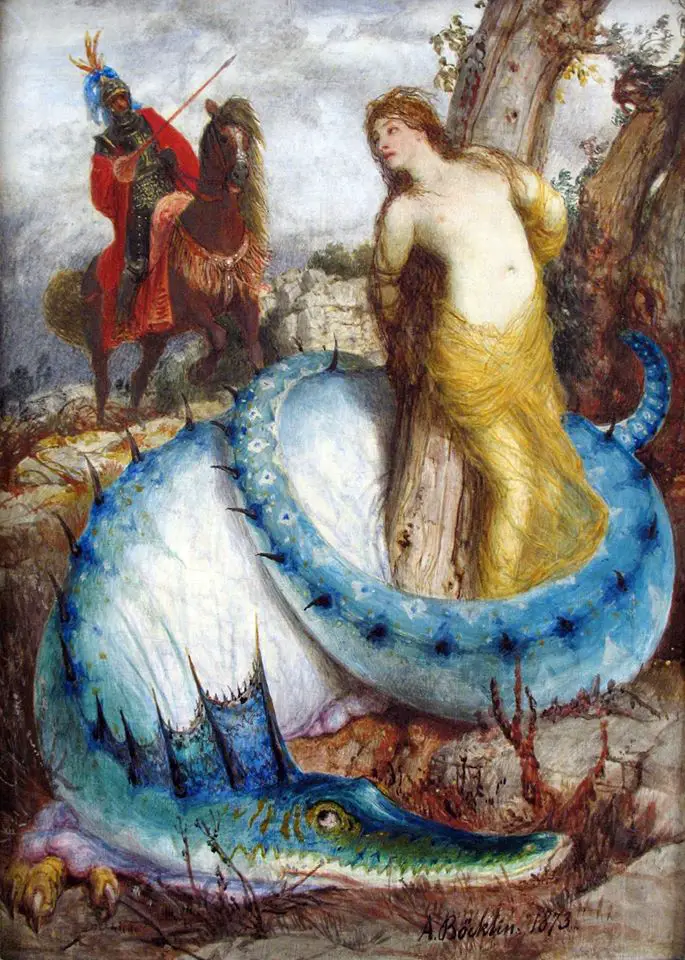
Well, from what has been explained so far, this mythical function used for the dragon is perfectly logical: it is always located in an underground place, in a cave that symbolizes the hidden heart of the earth (and of the cosmos) or, as we have seen, beneath all existing worlds, symbol at the same time of chaotic forces of a cosmic, chthonic-telluric and even psychic character (the "dark regresses of the psyche" central in the Orphic Mysteries according to the Jungian student James Hillman). The 'treasure' that the dragon guards represents this reserve of potentially infinite energy, and therefore seen as 'magical', thanks to which the initiate would be able to dominate his existence by shaping it according to his will, if only he were able to degree of defeat the dragon and make it his.
« Winning the Dragon it means […] not only opposing instinctive forces, unconscious terrors, but dominating them to restore human and celestial order, in other words understanding their nature to fertilize their life. " [9]
It is easy to understand how here the dragon does not represent an external power, perhaps of a diabolical type, but simply that unconscious, dark and chaotic complex that every man carries into the 'infernal' recesses of his individuality: what Jung called "Shadow" and the Orphics "Bread". Only theintegration with the part draconian of the self allows the Higher Self (the stink divine of the Mysteries) to reveal itself in all its splendor: meditate on this in connection with the symbolism, explained above, of the conjunction of the two side streets to reach the central one. From this point of view, the dragon is also the symbol of the material and leaden forces, attracting downwards, which stand in the way of the initiate's yearning to be reborn on an ontologically superior plane. The fundamental mission recognized by ancient traditions to the dragon is to protect the treasure, at the cost of killing all those who crave it without having "a pure heart", or, rather, without being totally integrated.
In this regard it is not secondary, especially in the medieval versions of the mythologem, the importance of the female figure to save which the hero faces the dragon. The latter is to be related to that principle soul or female part of the Self which, according to Jung, the subject must necessarily integrate into himself in order to reach the Higher Self. Nonetheless, being both thesoul represented by the "princess to be saved" that the dragon two aspects of being in its feminine state - preformal-abyssal and aquatic-underground -, it will not be difficult to understand how both of them esoterically represent the two 'extreme' poles of the soul principle that governs the human soul as a tyrant in its most unconscious dimension, in its most beneficial aspects (the princess) as in the more malevolent ones (the dragon). Princess and dragon, therefore, are once again exemplary dichotomies to be brought back to the aforementioned symbolism of the double serpent on the hermetic caduceus, of Jachin and Boaz, of ida e ping it, of the "Way of the Right Hand" and "Way of the Left Hand", and so on.
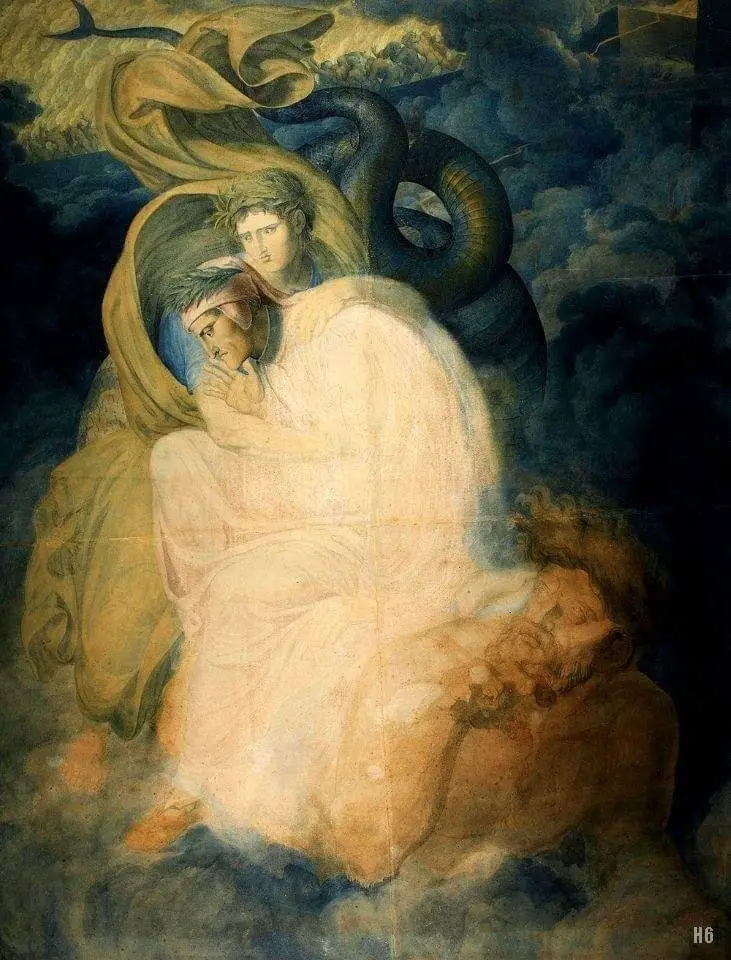
Note:
[1] W. Kafton-Minkel, Underground worlds. The myth of the hollow earth, Mediterranee, Rome 2012, p. 63
[2] H. Zimmer, Myths and symbols of India, Adelphi, Milan 2012, pp. 62-63
[3] E. Albrile, Hermes and the race of dragons, Mimesis, Sesto San Giovanni (MI) 2010, p. 11
[4] It is curious that in Sumerian the term amāru equivalent to "Great Flood" or "Dragon of the Flood"
[5] M. Polia, The blood of the condor. Shamans of the Andes, Xenia, Milan 1997, p. 78
[6] ML Von Franz, The experience of time, TEADUE, Milan 1997, p. 12
[7] RB Onians, The origins of European thought, Adelphi, Milan 2006
[8] D. Beresniak and M. Random, The symbols: the Dragon, Mediterranee, Rome 1987, p. 17
[9] Ibid, p. 46

12 comments on “The symbolism of the double serpent and the "guardian of the treasure""